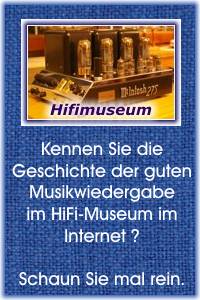Im Mai 1947 wurde das seit 1917 vorhandene "RADIO Journal" komplett zu "AUDIO Engineering" umgebaut.
Die Themen aus den Anfangsjahren des Radios hatten sich weitgehend überlebt und der Herausgeber hat 1947 (zwangsläufig) einen harten Schnitt gemacht. Das Hauptthema war von jetzt an als Mittelpunkt aller Themen der technische Aspekt der neuen Entwicklungen im UKW-Rundfunk und später auch im Fernsehen. Auch das Magnetbandgerät aus Deutschland - das Magnetophon - spielte eine immer größere Rolle und leitete einen welt- weiten Paradigmenwechsel in der Audio-Produktion ein.
.
AUDIO ENGINEERING • JUNE, 1947
EDITOR'S REPORT - Eigentlich das Editorial
IT'S JUST A MONTH since we put to bed our first issue of AUDIO ENGINEERING, and we thought you might be wondering how we are making out. The first few hundred copies were rushed to the "Chicago Radio Parts Show", where we had a booth (einen Messestand), and we expected such a quantity would take care of requirements for the entire period of the show. The interest was so great, however, that this supply was practically exhausted in a few hours.
Vom Erfolg fast erschlagen (Eigenlob !!)
Two days later, on May 15th, Time magazine hit the newsstands with its entire science section devoted to a discussion of S. Young White's article, "Too Much Audio", from our first issue. The following week John Tatric phoned in, telling us he was doing a story for the Saturday Evening Post on the Wagner-Nichols recorder (eine kleine Platte-Aufnahem-Maschine) article. Next, a cable from Electronic Engineering in London, requesting permission to reprint our lead article by Howard Chirm.
The New York Public Library, our office, and our representatives have been swamped with calls for copies and further information on the magazine. Our circulation department has been enlarged to take care of the flood of subscriptions and inquiries.
Celebrities - even Dr. Lee de Forest - have written in, expressing keen interest in Audio Engineering. Some letters from others in the field are reprinted in this issue.
Der "Umstieg" hat sich gelohnt
The variety of occupations represented by those who have written to us is really astonishing. While the majority are from those in the radio and sound recording fields, we have also heard from Oak Ridge, Fisher Bodies, a sprinkler manufacturer, several universities, foreign governmental departments, and even the secretary of the Long Island Duck Farmer's Association.
We believe that never before has an issue of any technical magazine in this field received such widespread attention.
All this, of course, is nice to know, and speaks well for the work of the editorial advisory board and our staff. But we realize that there is still considerable room for improvement.
We shall add articles of special interest to the public address specialist, and for the radio receiver engineer working on the audio sections of sets. One reader suggests the 6AS7 as an interesting possibility for a low-distortion output stage. It's worth investigating.
COMING ARTICLES
J. P. Maxfield's long-awaited article on microphone placement is now complete and is being cleared through Bell Labs.
Howard Chinn has sent in a line article on the use of single plugs for broadcast apparatus. His articles are always a delight to an editor because they are so carefully and neatly prepared.
Each sentence is polished until it gleams, and there is practically nothing to do but mark for type size and send to the printer.
George Nixon is down with the mumps, but will be back at work shortly. Jack Colvin has just brought in the first of a series of article on planning broadcast studio installations. Jack has done a great many of the more elaborate jobs for the American Broadcasting Company, and the method he has worked out makes complex layouts seem simple.
Art Schneider is finishing his article on the sound installation for the United Nations headquarters in Flushing.
S. Young White will be in again with another of his unusually fascinating articles which have aroused so much discussion. Incidentally, he's the White of the Loftin-White combination, holders of 175 patents in the radio field, including that of the universally used padding condenser. Commander Loft in is no longer active in the field.
Norman Pickering will reveal some of the excellent engineering behind the design of his pickup.
W.W. Dean and L.M. Leeds of the General Electric Company will present technical details on the new G.E. limiting amplifier which they developed. And there are many others which cannot be announced at the moment.
Many readers have written in, suggesting specific subjects for articles. In some instances, these have already been well covered in the literature. When such is the case, we are only too glad to inform the writer. If it's something new, and you know the subject well, write us a brief synopsis and perhaps we can make a definite assignment for a full-length article for which, by the way, we pay top rates.
LISTENER PREFERENCE TESTS
In this issue listener preference tests conducted by Moir in England and a report on Dr. Harry F. Olson's tests in this country are presented. Each obtains different results, but it is significant that Moir used reproduced sound while Dr. Olson employed "live" music in his tests.
More tests are needed, conducted under carefully controlled conditions, before any accurate conclusions may be reached.
Another article on this vitally important subject is now in preparation. The article on the high-quality amplifier represents a production model of that originally demonstrated by Lincoln Walsh before the "Radio Club of America" some years ago.
At that time development of associated equipment, such as pickups, tuners, and loudspeakers had not approached the standard reached by amplifying apparatus, so there appeared to be little point in carrying amplifier design to such a high standard of performance.
With the greatly improved equipment now available, such amplifiers acquire fresh interest as a link in a complete, high-quality, reproducing system.
J.H.P.


